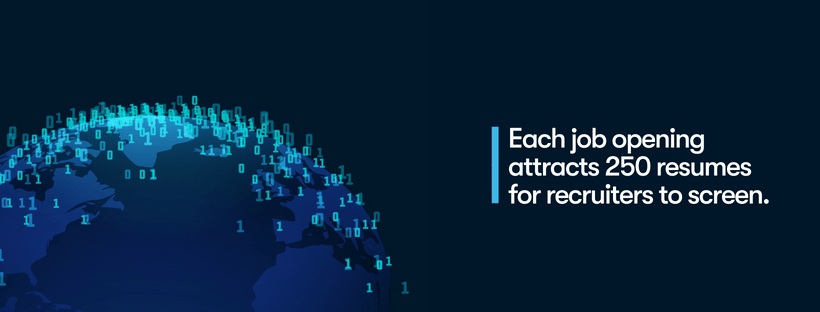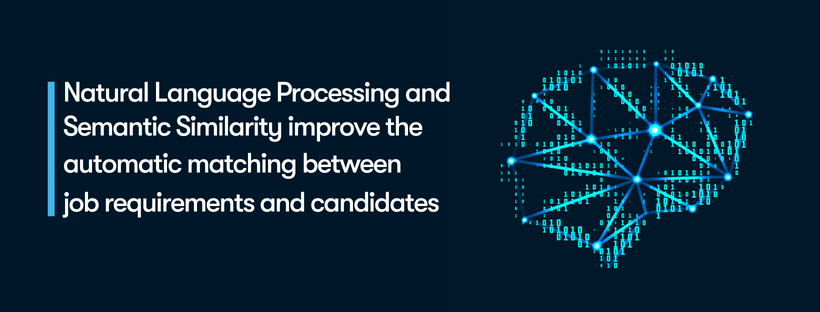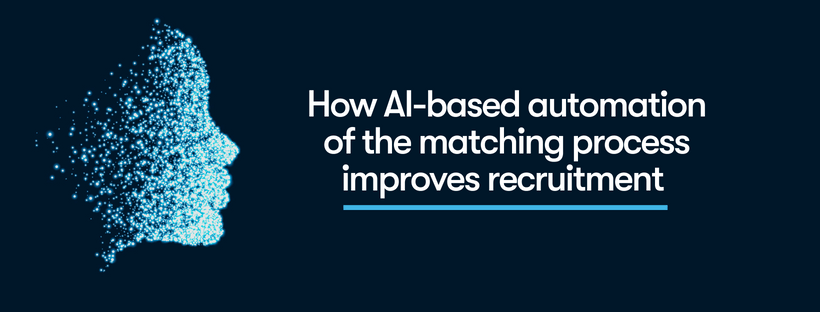The use of Artificial Intelligence (AI) these days is so pervasive that we hardly notice that we are using it in our daily life: from web language translators, photo apps that recognise faces and email spam filtering to virtual assistants, web product recommendation, and even self-driving cars.
All of these applications learn the desired functionalities (e.g., how to classify an email as either valid or spam; how to recognise a stop traffic sign in self driving cars) from past examples that were manually classified by humans, and, therefore, they are categorised under a specific branch of AI: machine learning.
Given the widespread use of AI approaches today, it is normal to expect its massive adoption in the recruitment industry. However, even though companies generally understand the need for process automation in recruitment, it is a fact that 47% of companies have dated HR software solutions (Bersin by Deloitte), and several others restrict the use of software tools to job advertising and social networks.
At the same time, while a great number of interesting new AI-based solutions are emerging in the recruitment industry, they are generally focused in one specific dimension of the recruitment process, such as the use of chatbots or automatic tools for video.
But AI adoption can significantly improve recruitment, especially in two important dimensions: time to hire reduction and completion rate increase. As we are going to see, the AI-based automation of the matching process helps both.
How does the automation of the matching process improve recruitment?
The automation of the matching process is one of the great applications of AI in the recruitment process. We know for a fact that each job opening attracts 250 resumes (Glassdoor) and that a great number of these resumes are unqualified and junky (MRINetwork 2017 Recruiter Sentiment Survey). Moreover, consider time-to-hire the top measurement of success.
AI enters the scene here, automating repetitive and time-consuming tasks in the recruitment workflow - such as resume screening -, which take excessive time from recruiters, enlarge the recruitment cycle, and contribute to candidates’ dismissal.
As a plus, as machine learning algorithms improve with the input of new data, it learns to find the right candidates, acting as a filter for the flood of job applications, and making sure that top talent candidates are retained and that those who are unqualified are not accepted for further analysis.

Our own statistics show that skeeled’s proprietary machine learning screening algorithm automatically rejects nearly half of the candidates at this first phase of resume screening. It works with a set of carefully chosen characteristics, or features, derived from both job opening descriptions and applicants’ information using the best data science practices.
It also uses natural language processing (NLP) and semantic similarity to address open text fields, improving the matching between the job requirements and the candidates’ education, experience, and skills, without forcing recruiters to previously convert their textual descriptions into rigid form fields. As an example, skeeled algorithm is able to understand that a candidate’s experience of “human resources interim” is in accordance with the job title “Junior HR Assistant”.
The use of machine learning approaches is not restricted to resume screening, though. For instance, skeeled’s integrated solution also offers an optional personality test (based on the Big 5 model) to be undertaken by those candidates that passed the resume screening step, as well as pre-recorded video interviews to provide gather even more insightful data about candidates. This augmented information about the candidates gets converted into new features used in the automation of the next recruitment step, the ranking of the most fitted candidates.
Next, recruiters have the chance to review detailed information about all the candidates and the jobs they applied to, or to only focus on the candidates that were better ranked by the machine learning based solution. It is worth to note that skeeled’s software allows recruiters to give applicants their own evaluation, which helps refining the algorithm and keep improving its performance as new data arrives.
By fully automating these two fundamental steps of the recruitment process - resume screening and ranking -, recruiters have more time to concentrate on other tasks that are not yet successfully addressed by AI, namely those that imply cognitive skills and emotional intelligence. At the same time, the recruitment process runs smoother and faster, which increases the engagement of candidates and the associated completion rate.
Other AI trends in recruitment
In this article, we focused on the use of machine learning to automate the processes of matching and ranking of candidates, two recruitment tasks that are repetitive and time consuming. However, other trends have recently emerged in the AI-based recruitment industry. These include talent sourcing, which uses web bots to search for passive candidates that are open to new opportunities; chatbots, which help engaging with candidates and may be used to automatically fill missing information; prescriptive analytics, which help recruiters better understand the available candidate pool; and programmatic advertising. Are you curious about these topics? Don’t worry, we will explore these new trends in future posts!

Skeeled offers you the perfect opportunity to bring innovation and digitalisation to your hiring. Check our website or our LinkedIn and Facebook pages for further information.
Thanks for reading and see you next time!
Your team here at skeeled



